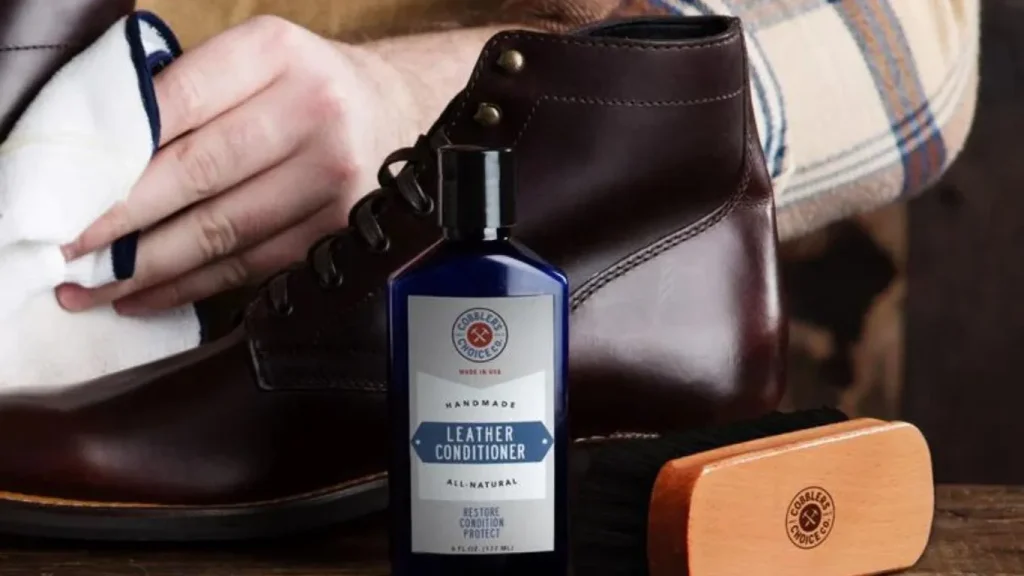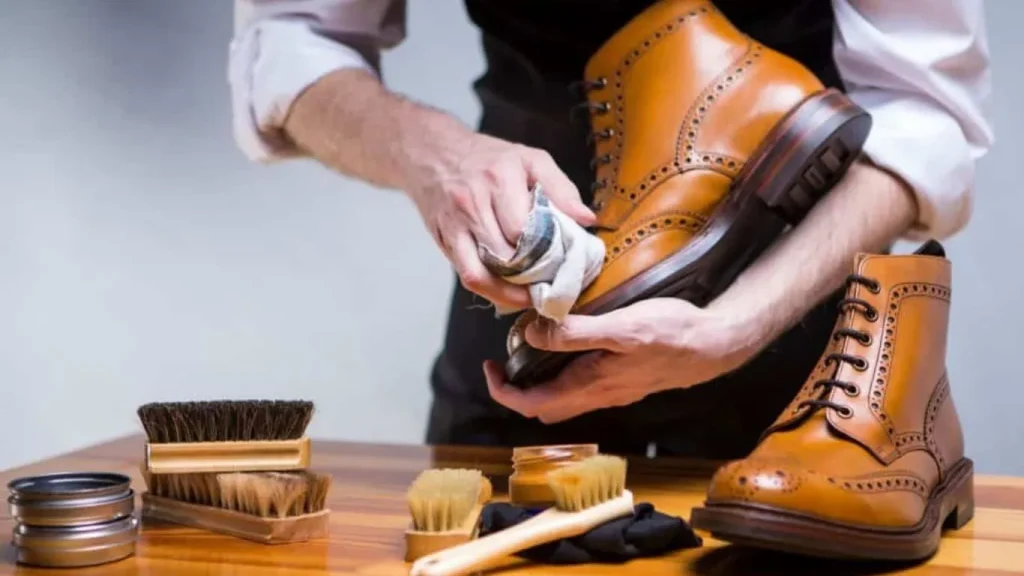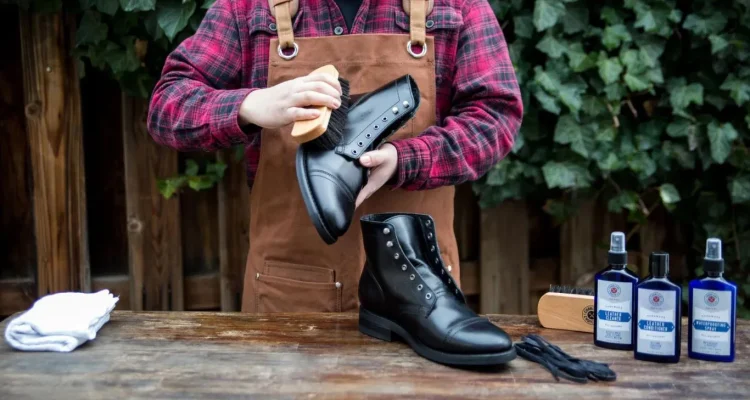Introduction
Leather is one of those materials that, when properly cared for, can last a lifetime. It’s known for its durability, but without the right maintenance, it can dry out, crack, and lose its shine. This is where leather conditioner comes into play. But, how exactly do you apply it? Keep reading to discover how you can keep your leather items looking fresh and new for years to come.

Types of Leather Conditioners
There are a variety of leather conditioners on the market, and choosing the right one is key.
Liquid Conditioners
Liquid conditioners are easy to apply and are great for regular maintenance. They penetrate the leather quickly and are perfect for larger items like furniture or car interiors.
Cream-Based Conditioners
These are thicker and provide a deeper conditioning experience. They are ideal for shoes, boots, and jackets, offering protection from the elements while restoring the leather’s natural texture.
Oil-Based Conditioners
Oil-based conditioners give leather a natural shine and are often used on heavier, thicker leather items. However, they can darken the leather, so use them cautiously.
When to Apply Leather Conditioner
How often should you condition your leather? The answer varies based on usage and exposure.
Frequency of Application
For frequently used items like leather shoes or car seats, conditioning every three months is a good rule of thumb. For less-used items, twice a year should suffice.
Signs Your Leather Needs Conditioning
If your leather feels dry, stiff, or has visible cracks, it’s a sure sign that it needs a little TLC. A faded appearance can also indicate it’s time to condition.
Tools You Need for Conditioning Leather
Before you begin, gather the right tools for the job:
- Leather Conditioner: Choose one that suits your leather type.
- Microfiber Cloth: This helps apply the conditioner evenly.
- Soft Brush: Ideal for cleaning dirt before conditioning.
- Leather Cleaner: Essential for prepping the surface.
How to Choose the Right Leather Conditioner
Not all conditioners are created equal. Here’s how to pick the right one.
Considering Leather Type
Different leathers require different conditioners. Suede and nubuck, for example, need special care compared to full-grain leather.
Ingredient Checklist
Look for conditioners that contain natural oils like lanolin or beeswax. Avoid those with harsh chemicals, as they can damage leather over time.
What to Avoid in Leather Conditioners
Steer clear of silicone-based conditioners, as they can cause long-term damage by clogging the leather’s pores.
Prepping Your Leather Item
Before applying conditioner, it’s important to prep the leather.
Cleaning Before Conditioning
Use a leather cleaner to remove dirt and grime. Conditioning dirty leather will only lock in those impurities.
Spot Testing for Safety
Always test the conditioner on a small, hidden area to ensure it doesn’t cause discoloration or damage.
Step-by-Step Guide: How to Apply Leather Conditioner
Now, let’s dive into the actual process.
Step 1: Clean the Leather
Using a soft cloth or brush, gently clean the leather to remove dust and dirt.
Step 2: Apply Conditioner Evenly
Apply a small amount of conditioner to your microfiber cloth and rub it into the leather using circular motions.
Step 3: Massage the Conditioner Into the Leather
Massage the conditioner thoroughly into the surface, ensuring all areas are covered.
Step 4: Let the Leather Absorb the Conditioner
Allow the leather to rest for 20-30 minutes, giving it time to absorb the conditioner.
Step 5: Buff for a Polished Finish
Using a clean, dry cloth, buff the leather to a soft shine. This removes any excess conditioner and enhances the leather’s appearance.
Common Mistakes to Avoid When Conditioning Leather
Conditioning leather might seem simple, but there are pitfalls to watch out for.
Overapplying Conditioner
Applying too much conditioner can leave the leather feeling greasy. Always start with a small amount and add more if needed.
Using the Wrong Type of Conditioner
Ensure the conditioner you use is designed for the specific type of leather you are treating.
How to Properly Store Leather After Conditioning
Storing your leather correctly after conditioning is vital for maintaining its quality.
Ideal Storage Conditions
Store leather in a cool, dry place away from direct sunlight. Sun exposure can cause fading and cracking.
Avoiding Sun and Humidity
Excessive moisture can lead to mold growth, while too much sunlight can dry out the leather.
Leather Conditioning for Different Items
Different leather items require different care techniques.
Shoes and Boots
Use cream conditioners for footwear, as they offer both protection and a polished finish.
Jackets
For jackets, a light liquid conditioner is ideal, as it penetrates without leaving a greasy residue.
Sofas and Furniture
For large surfaces, use a liquid conditioner and a soft brush for even coverage.
Car Interiors
Leather car seats endure a lot of wear. Condition them every few months to keep them soft and prevent cracking.
Leather Conditioning Myths Debunked
Let’s clear up some common myths about leather conditioning.
Myth: Oil Is the Best Leather Conditioner
While oils can condition leather, they often leave it greasy and can darken the material.
Myth: All Leather Conditioners Are the Same
Different conditioners are formulated for different types of leather. Using the wrong one can damage your item.
How Leather Conditioner Affects Durability
Leather conditioner extends the life of your items by preventing cracks, fading, and drying out, ultimately saving you money on repairs or replacements.
Signs You’re Over-Conditioning Leather
Yes, you can overdo it. Here’s how to know.
Dull, Sticky Leather
If your leather feels sticky or dull, you’ve likely applied too much conditioner.
Discoloration
Over-conditioning can cause the leather to darken or develop an uneven color.
Leather Conditioner Alternatives
If you’re out of store-bought conditioner, consider these alternatives.
DIY Leather Conditioning Solutions
Mix a small amount of vinegar with linseed oil as a quick fix. Just make sure to spot-test first!
FAQs
- How often should I apply leather conditioner?
Every 3-6 months, depending on usage and exposure. - Can I use olive oil as a leather conditioner?
While it might work in a pinch, olive oil can leave a sticky residue and attract dirt. - What happens if I over-condition my leather?
Over-conditioning can make the leather greasy and darken its color. - Can I condition suede leather?
Suede requires special care, and regular leather conditioners should not be used. - Is it necessary to clean leather before conditioning?
Yes, cleaning removes dirt that could get trapped in the leather if conditioned while dirty.

Conclusion
Conditioning your leather items is key to keeping them looking their best. By following these steps, you’ll ensure that your leather remains soft, supple, and free from cracks for years to come. Regular maintenance with the right conditioner will prolong the life of your cherished leather possessions.


Congratulation!